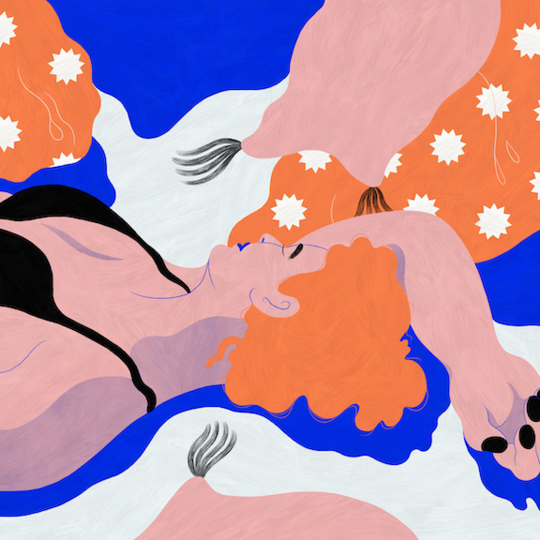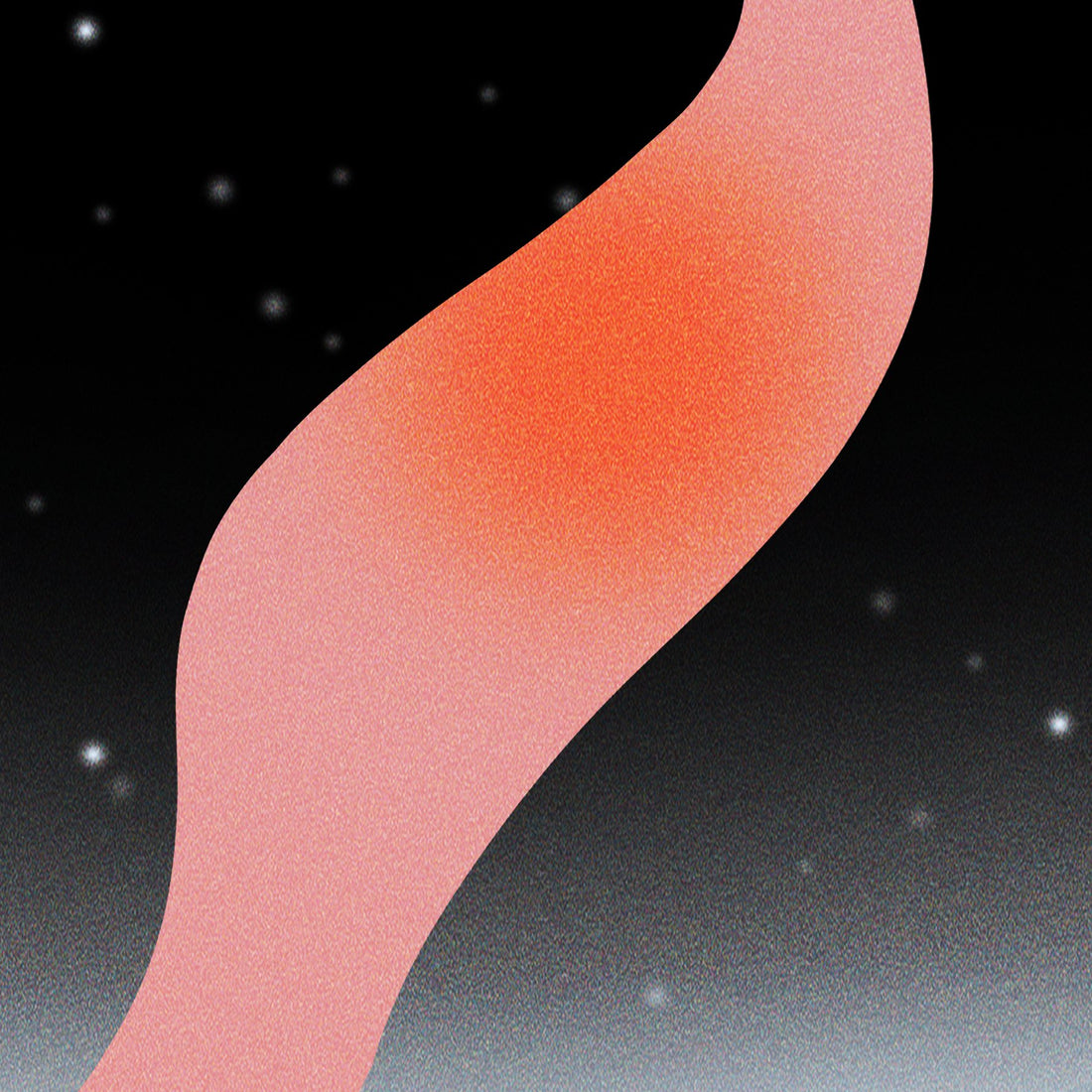Alexandra Fine, Credentialed Sexologist, M. Psych | Written by Dame
The Sexual Response Cycle | What We Know | Possible Explanations | Can the Length of the Refractory Period be Altered? | Do Vulva-Havers Experience a Refractory Period?
The sex was great. The orgasm was the stuff of legends. But what happens next?
For most people, it depends on their anatomy.
Vulva-havers may feel a rush of feelings and emotions that make them want to enjoy the moment. If the climax was with a partner, they may want to just relax and cuddle for a while. On the other hand, they may immediately be ready and anxious to go again.
Some penis-havers might also want to share some relaxing, intimate moments with their partner. Others may just want to roll over and go to sleep.
In almost every case, though, the one thing penis owners don’t want to do is plunge right back in for a second round. Even those who are still somewhat mentally aroused simply won’t be able to perform.
You might say that, for those people, their spirit is willing but their flesh is weak.
Why does that happen? It’s because penis-havers – with only very rare exceptions – have to go through what’s called a refractory period after they climax.
The Sexual Response Cycle
The legendary sex researchers Masters and Johnson shook the world in the 1960s, with the release of their book Human Sexual Response. They were the first experts to actually observe study participants’ sexual behavior, and then draw serious scientific conclusions.
It wasn’t just sexual health professionals and sexologists who paid attention to the findings published in Human Sexual Response, either. The book was a best-seller.
Many of those findings broke new ground. For example, Masters and Johnson pioneered a new and successful method for treating many sexual dysfunctions which had resisted earlier therapies. They were also the first to document that vulva-havers could have additional orgasms after climaxing once.
However, their most important work defined a four-stage human sexual response cycle. Some later experts have taken issue with a few of the specifics, but the model is still taught in medical school today – and it remains the go-to theory in psychiatry and sexual medicine.
The four stages of the sexual response cycle, according to Masters and Johnson:
- Excitement (sometimes called arousal): Sexual desire and sexual arousal begin, triggered by physical, mental and/or sexual stimulation. Physical responses like increased heart rate, blood flow and blood pressure, tense muscles, and initial secretion of fluids signal that the body is getting ready for sex.
- Plateau: The physical responses intensify and muscle spams begin; the clitoris becomes sensitive and retracts, or the penis becomes fully erect.
- Orgasm: Physical responses are at their peak, flushing may occur; muscle contractions in the vagina and at the base become rhythmic. Ejaculation occurs in penis-havers, and for all humans, climax is accompanied by a powerful release of sexual tension.
- Resolution: The body returns to its normal state, muscle tension relaxes, and the easing of blood flow means swelling in the genitals ends. Feelings of fatigue, satisfaction and intimacy set in.
It’s during the resolution phase that the different responses we mentioned at the start may be obvious; some vulva-havers are still aroused and desire more sex, but penis-havers simply aren’t ready for sexual activity yet.
That’s because of the refractory period almost all penis owners experience during the resolution phase – and often, well after it.
What We Know About the Refractory Period
Masters and Johnson detailed the “what” of they called the “male refractory period”. The “why” is, even six decades later, still a subject of debate.
Let’s start with what we do know about this “recovery time” that penis-havers need after they ejaculate.
- Their refractory period begins immediately after ejaculating.
- The refractory period occurs after masturbation and after penetrative sex.
- During the refractory period a person can’t effectively respond (physically or mentally) to sexual stimulation, and can’t have an orgasm.
- The length of the refractory period varies substantially, lasting anywhere from minutes to days.
- The body releases hormones like prolactin and oxytocin during the refractory period, and lowers dopamine levels to allow for rest and recovery.
(If you’ve seen references to “absolute refractory period,” “relative refractory period” and “action potential” while surfing, disregard them. They refer to the behavior of neurons or muscles in the brain, not sexual behavior.)
One particularly interesting fact is the wide disparity in refractory time between penis owners. Why do some need just minutes, while others might need more than a day?
Research and anecdotal evidence show that many factors come into play. They include a person’s overall health, their sexual health and overall sexual function, their general level of libido, and their age. That last one is easiest to quantify.
The refractory period usually starts to increase after age 40 or so; one study found it averages around 30 minutes and a shorter amount of time in 18-year olds, but it’s about 20 hours for those over age 70. There’s also some evidence that it takes longer for a penis-haver to recover after penetrative sex than it does after masturbation.
That still leaves the big question, though; it’s not clear why penis-havers experience a refractory period. Some theories relate to physiology and have been somewhat justified by evidence. Other promising theories have been researched and discarded.
Possible Explanations for the Refractory Period
One popular theory involves the post-climax release of oxytocin, the so-called love hormone credited with stimulating the feelings of well-being that normally follow sexual activity. The hormone is also believed to play a role in the ejaculation process and the return of the penis to its normal size after orgasm. That’s why it might make sense that oxytocin causes or contributes to a penis-haver’s need to recover. However, there’s still no definitive proof.
An earlier theory suggested that a protein produced in the pituitary gland, prolactin, played a major role in refractoriness. That’s because the body’s levels of prolactin have been shown to affect sexual arousal and function; the protein has even been investigated as a possible treatment for sexual disorders like erectile dysfunction.
This idea was supported by a 2002 study involving a penis-haver who was multi-orgasmic; they were able to have several successive orgasms, apparently without experiencing a refractory period. And researchers found that for some reason, he did not secrete prolactin after ejaculation.
More recent animal research, though, has indicated that altering prolactin levels has no effect on the length of the refractory period. There are similar theories that a hormone called GnIH may be responsible, but they remain unproven. It has already been shown that testosterone levels have no connection to the length of a refractory period.
A third possible answer offered by Indiana psychology professor Kenneth Turley involves the peripheral autonomic feedback mechanisms that regulate other bodily functions like blood pressure and breathing. Turley suggests that the body may, in essence, establish a feedback loop between the genitals and the brain, preventing sexual arousal and function until genital tension returns after orgasm. However, even he admits that there’s no evidence to support his theory.
Bottom line: the exact reasons for the refractory period and its length remain a matter of speculation and investigation.
Can the Length of the Refractory Period be Altered?
There’s little evidence showing that it can, despite anecdotally-based advice found online and books purporting to hold the secret to a shorter refractory period.
Limited 2002 research claimed that participants taking the erectile dysfunction medication sildenafil (Viagra) reduced the period compared to those taking placebos, but a later, more-rigorous study reported no difference. Of course, any use of Viagra for this purpose should only be considered after seeking medical advice, preferably from a urology specialist.
It’s possible, but not proven, that aerobic exercise may be somewhat helpful in shortening the refractory period, since there’s a definite correlation between sexual and cardiovascular health.
Do Vulva-Havers Experience a Refractory Period?
That’s also a matter of some controversy.
Masters and Johnson reported that vulva owners don’t experience a refractory period, which is why some are able to have multiple orgasms. Some criticism of their sexual response cycle theory has focused on findings like that one; critics claim that the four linear stages described by Masters and Johnson actually describe the response cycle of penis-havers much more than vulva-havers.
The criticism seems to be valid, at least when it comes to a refractory period; many of those with vulvas do need recovery time before they are ready to resume sexual activity. Some say that’s because of fatigue; others say it’s due to clitoral insensitivity that makes further sexual contact uncomfortable or painful. In one study, 96% of those surveyed reported some degree of clitoral insensitivity and a desire to avoid further stimulation.
Does that qualify as a refractory period? It depends on your definition. More research on the subject is unquestionably needed.




















































